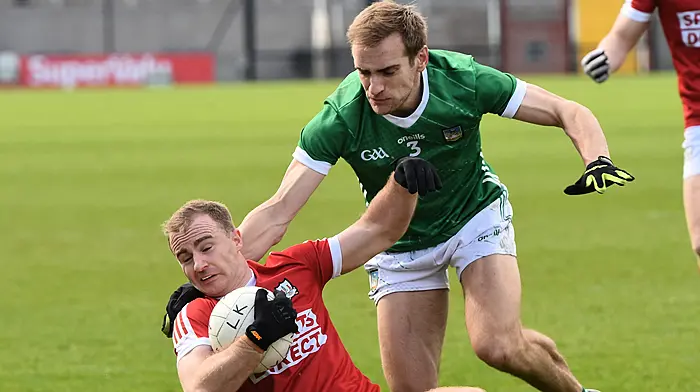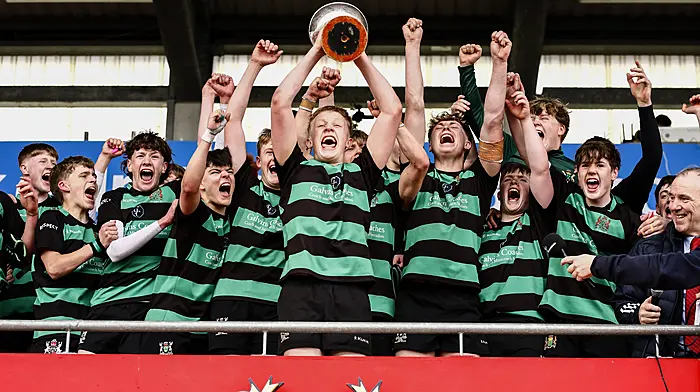YOU may recall the 2011 All-Ireland senior hurling championship semi-final between Tipperary and Dublin.
Tipp, the champions, struggled to shake off their opponents and in the end they only had four points to spare, 1-19 to 0-18, as they progressed to a third straight final.
Dublin full-back Peter Kelly had 16 possessions in that game, generally a good sign for a number 3, while his opposite number Lar Corbett was limited to just five possessions. However, Corbett managed to score 1-3, ultimately the winning of the game. Such a vignette is a prime example of why Skibbereen native Gordon Crowley doesn’t have much meas in possession statistics.
Living in Galway, Crowley has been involved in statistical analysis for Tribesmen county sides for the past decade, playing a part in four All-Ireland minor wins and an U21 victory as well as being part of Anthony Cunningham’s backroom when the county reached the senior final in 2012.
In that time, he has seen the craft of stat-keeping grow exponentially, and so is able to outline the unhelpful figures from those that are key.
‘One that is low-value is possession,’ he says.
‘Cork, for example, would top possession and passing-accuracy stats over the last few years but they haven’t won any All-Irelands.
‘A very good indicator is shooting efficiency. In the past, if someone had 35-40 shots at goal, they were a team that hammered someone else, but now, routinely, both teams will have that many shots per game.
‘The amount of time that the ball is in play is phenomenal. Goalkeepers are getting it out quicker, the ball is lighter, the scoring area is bigger. It’s the teams who are most efficient with that that will win.
‘In senior championship hurling, you’ll have teams with relatively the same number of chances, one will score 60 percent of them and the other will score 50 percent and that’s a five- or six-point game.
‘To give an example because they’re All-Ireland champions, Tipperary’s average shooting efficiency is 58 percent; club level is 50 percent. Séamus Callanan’s is about 70 percent – give him ten chances and he’ll get seven scores, and some of them will be goals.
‘The thing with that metric, as opposed to possessions or anything else, is that it goes straight to the bottom line.’
Another key stat is turnovers, especially when possession is won closer to the opposition goal.
‘A turnover doesn’t go on the scoreboard but it’s still important – I saw a saying recently that it’s the new playmaker,’ Crowley says.
‘If a forward turns over a back from a puckout, the defence isn’t set up properly, the forward is facing goal, it’s a prime opportunity for scores.
‘There has been a massive emphasis on turnovers and tackles. If your forwards are putting in more of them than your backs, then you’re likely to win the game. It’s one of the biggest indicators.’
Having been a selector for Liam Mellows’ senior side in Galway, Crowley found his time limited as his family grew, but offered to do statistical work instead. When Mellows manager Brian Hanley took the Galway minor job, Crowley made the leap too.
The methods involved have certainly evolved over the past decade.
‘You have your people, your process and your tools,’ he says.
‘They’re the three circles in the Venn diagram and it’s how they meet in the middle, that’s the sweet spot you want to get.
‘The tools have evolved massively in that time. Back then, you were driving to lads’ houses on Sunday nights to get copies of DVDs whereas now you’re getting game footage shared online directly after matches.
‘It was a long, laborious process in the beginning to pull video footage from a game but now it’s a lot easier with software packages. Things have evolved too in that, previously, the only way you’d be sharing footage with players was bringing them all into a room and having a projector broadcasting on to them. There was a period in the middle where you gave it to them on USB sticks but now you click a button from home and put it on a platform like Huddle and players can click in and see all of their participation in a game over three or four minutes or look at all of the scores or all of the tackles or all of the turnovers.
‘That process has become much more streamlined, the tools have become better and now you’re approaching it in terms of what the management want to drive when you’re looking at the analysis, the key indicators that you want to track during the games.’
However, it would be wrong to think that it’s all about Excel spreadsheets and bare figures.
‘With minors, you might have a couple of modules at the beginning of the year as to what the coaches wanted,’ Crowley says.
‘A lot of conversations about stats revolve around numbers and they are part of it, but people don’t learn by numbers, they’re visual learners and they learn by looking at something.
‘We would have put a lot of effort into having video content that matched what the coaches were going to deliver.
‘For example, before being coached on how to set up for an opposition puck-out, there’d be a short video package – ‘Before we go out on the pitch and do it, let’s have a look at what it looks like.’ Then, in the players’ heads, it becomes easier to carry it out.
‘Then there’s in-game analysis and you’re trying to pick actionable items. At minor or U20, you might have three guys doing it, at senior you could have between six and nine. There’s an awful lot goes on in a championship game and you’re kind of the insurance policy.
‘A lot of coaches are completely plugged into the game, every movement, every ball, every change in shape, it flows through them. You’re there if there’s something they’ve missed or you’re speeding some something they might have seen anyway, getting that decision to them ten minutes before they realise, “That midfielder is out of the game.”’
The higher up you go, the more technical things are, naturally. But, for any budding statsmen, Crowley maintains that it’s possible to start off with basic tools and still be useful.
‘There are different set-ups,’ he says.
‘You might have guys calling the events and someone else logging them and the data feeding to a central computer. Then you apply a weight to the player depending on the events he’s involved in – for a possession it’s a plus-one, a successful pass plus-two, if they get a score it’s plus-three, a tackle plus-three, but if they lose possession it’s minus-one.
‘Then you look at the head-to-head – a player might be doing nothing but his man might be doing nothing, either.
‘That’s the higher end of it, two iPads and a computer, but you can still get an awful lot of information with two or three lads and a pen and paper. If you’re tracking puckouts, workrate, shooting and shooting areas, you’ll get a lot from those and they’ll directly facilitate management giving a message.’









